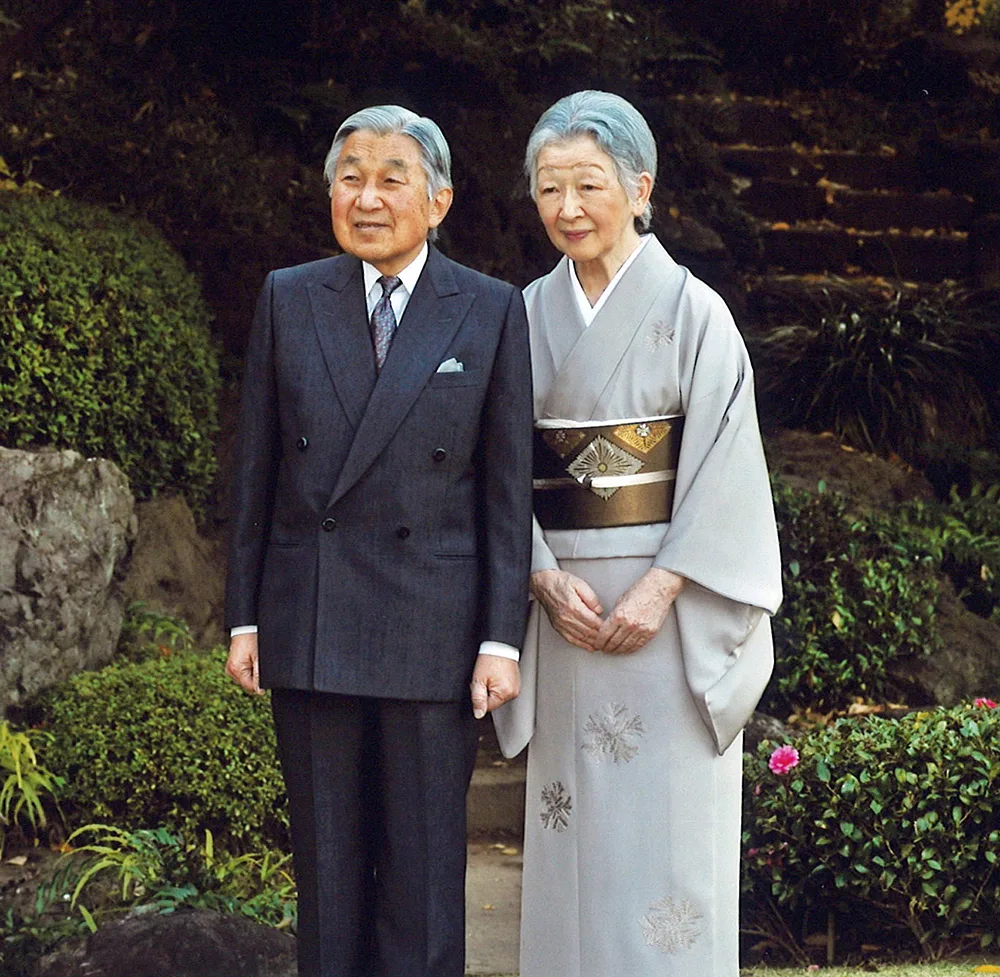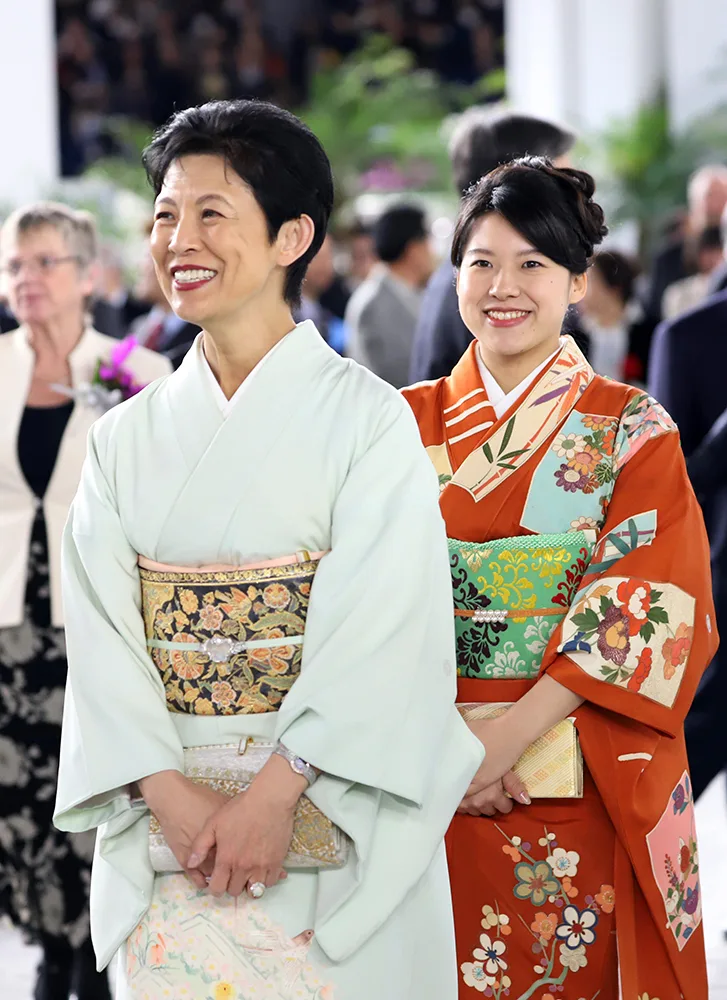The bride spoke of her happiness, the groom of his good fortune, but as royal weddings go, the October 28 marriage of Japan’s Princess Ayako to businessman Kei Moriya was clearly short on ceremony.
No carriages, no bands, no crowds, and – from the Imperial family – no compromises.
When Ayako, 28, performed the traditional exchange of rings with her 32-year-old groom, she was also exchanging her royal life for one as a commoner.
Princesses in the world’s oldest monarchy are not allowed to marry outside the royal ranks, so having arrived at the Meiji Shrine in central Tokyo as “Her Imperial Highness”, she left it as plain Mrs Moriya. Her “dowry” was a one-off, tax-free payment of $1.25million from the royal coffers.
Yet there is more to Ayako’s demotion than a touching tale of a woman sacrificing all for love. It arises from what is becoming the biggest crisis in the Japanese monarchy’s 2500-year-old history.
While other royal families around the world have shaken off the dynastic cobwebs, refreshed their bloodlines and adapted to social change, the Imperial household clings jealously to its ancient ways.

Some in Japan are calling for an overhaul of the traditionally rigid codes and protocols.
Secrecy, tradition and obeisance remain its keywords, and while the nothing-newfangled approach may have helped maintain the monarchy’s mystique, it has also created a problem that no one foresaw or can currently find an answer to.
Essentially, the royal family is running out of royals – and most conspicuously out of marriageable men. In the four decades from 1965 to 2006 not a single male baby was born into the ranks.
As a consequence, Japan’s young princesses – currently seven of them – have been left with no chance of finding husbands, unless, like Ayako, they venture beyond the royal confines.
“It is a bizarre situation,” says Professor Jeffrey Kingston of Tokyo’s Temple University, “and not really sustainable. Everyone accepts that, but the hard part is agreeing how to change things.”
Ayako isn’t the first princess to jump ship.
Four years ago, her older sister, Princess Noriko, married Kunimaro Senge, the curator of a historic Japanese shrine.
Although the groom came from an aristocratic family, and was a second cousin of the reigning Emperor Akihito, he was deemed insufficiently “royal” to make the cut as a husband, and Noriko was forced to renounce her title and privileges and also accepted a pay-off.
A third princess, Mako, aged 27, and the Emperor’s oldest granddaughter, is currently threatening to marry a Tokyo trainee lawyer, despite her family’s objections.
“All this gets handled in an outwardly polite and civilised way,” says Hinota Matsuda, editor of a London-based Japanese newsletter, “but in reality it’s an insurrection. The women of the Imperial family are saying they have had enough.”
The princesses’ mutiny has come at a particularly awkward time for the Imperial family.
After 30 years on the Chrysanthemum Throne, Akihito, 84, is scheduled to abdicate on April 30, 2019 in favour of his mild-mannered son, Crown Prince Naruhito, and his trusted courtiers are desperate for a smooth handover.
But a rival faction of modernisers – in and outside court – sees a rare chance to overhaul some of the rigid codes and protocols that shape every aspect of the monarchy, and the two sides are squaring off.

Emperor Akihito and his wife Michiko, who was a commoner when they married in 1959. The law forbidding marriage outside the royal family applies only to women.
Among those demanding change, the plight of the princesses has become a rallying cry.
Ayako – highly-educated, well-travelled, attractive and popular with the public – would appear to be exactly the kind of asset any switched-on royal family would cherish.
The daughter of the late Prince Norihito, she was working as a researcher at a top university when she met Kei, a rising young executive with a Japanese shipping firm.
“My mother is a friend of his mother,” she later explained, “and they introduced us, and all I remember is that our conversation was so lively, and the time went by so fast it didn’t seem that we hardly knew each other.”
Soon enough they were in love, and alarm bells were ringing at the palace, where Ayako was left in little doubt of the consequences of taking the relationship forward.
“It isn’t that the Imperial family would actually try to stop anyone marrying,” says Hinota. “They understand the problem, and in a way they sympathise, but they really don’t want to change the rules.”
A week before her wedding, Ayako was granted a final audience with the Emperor, at which she made her formal farewells, and pledged continuing allegiance as a private citizen. Along with the right to vote, she may now speak in a personal capacity, and many Japanese are wondering what she might say.
Only around 30 invited guests and 800 well-wishers gathered at the Shinto shrine, set in velvety Tokyo parkland, for her wedding.
Ayako wore a traditional silk uchiki kimono of yellow silk, embroidered with pink flowers and fern motifs, while Kei was in Western-style morning dress with a top hat. After ritual prayers and a sip of sake, the pair exchanged their rings, and emerged into the sunshine as man, wife, and – in the eyes of many – victims of a needlessly intransigent system.

Ayako and Kei on their wedding day.
Like the court itself, the public is deeply divided about the need for change.
In May, millions of Japanese tuned in to watch the spectacular wedding of Prince Harry to Meghan Markle, an American, bi-racial divorcee, but almost none of them could imagine such a union in Japan.
“It’s impossible,” says Hideya Kawanishi, a history professor at Kobe University. “It’s not written in the Imperial Household Law, but no divorcee would be considered. There would be a thorough check on her background, and a woman like Meghan would definitely be excluded.”
Other experts say merely being a foreigner would disqualify any potential royal bride. The last recorded marriage of a senior royal to a non-Japanese bride was in the 8th century – and even that is disputed!
Upholding tradition is of critical importance to the Japanese court. It could hardly be otherwise. Emperor Akihito can trace his family line back through an astonishing 126 generations – “almost literally,” writes Frank Gibney, an American professor of Japanese studies, “into the mists of time.”
No other monarchy comes close in terms of endurance, with the lineage of Britain’s royal family, for example, stretching a mere 950 years from the Norman conquest, and even in this time period the crown has passed through several different families.
“The concept of the continuous, undiluted bloodline is absolutely central to how Japanese nationalists see their identity,” says US Professor Ken Rouff, author of several books on the Japanese monarchy. “They believe that if it is broken, Japan will cease to exist.”
Although the Imperial family was slimmed down and stripped of some privileges after Japan’s defeat in World War Two, Naruhito, 58, will inherit an institution that is essentially unchanged since the medieval Shogun era.
The throne, along with all major positions of power, is reserved for men, and the main role of women remains raising heirs and offering occasional decorative reminders of their existence on special occasions.
So little official information is released about them that when Empress Nagako, widow of the late Hirohito, died aged 97 in 2000, millions of Japanese were unaware that she had still been alive.

Ayako with her mother, Princess Takamado.
The prohibition against marrying commoners only applies to female royals; men can – within reason – marry who they like, and Naruhito’s own wife, the Oxford-educated soon-to-be Empress Masako, is the commoner daughter of a diplomat.
According to Masako’s biographer, Australian journalist Ben Hill, she arrived determined to introduce changes, but was ruthlessly crushed by the system, and today – reportedly suffering from depression – rarely leaves her rooms in the Togu Palace.
According to court etiquette, she must walk three steps behind her husband with her eyes lowered, and even to travel into Tokyo she must request permission 14 days in advance. She has no money of her own, or even a private telephone. When, early in her marriage, she gave a joint press conference with Naruhito, she was admonished by courtiers for speaking for nine seconds longer than her husband.
As Masako discovered – perhaps too late – the real power at Court belongs to the Imperial Household Agency (IHA), a secretive 1200-strong secretariat, dedicated to maintaining the Emperor’s near-god-like standing in national life, and ferociously resistant to reform.
Despite pleas from politicians and cautious criticism from a usually-compliant media, the agency has fought off all attempts to liberalise the rules.
In a sense, the IHA is engaged in an elaborate conjuring trick. With relatively few resources and a low-wattage royal line-up, it must convince the public that the Imperial family is the indispensable essence of all that has made Japan one of the world’s most successful, stable and culturally distinctive countries.
“Our real problem,” wrote an anonymous contributor to the Ashai Shimbun newspaper recently, “is that our monarchy is under no threat from anyone except itself. Like all living organisms, it must evolve or die.”

Crown Prince Frederik of Denmark met his bride-to-be, Australian Mary Donaldson, in a Sydney pub.
Europe’s royal houses found themselves in the same fix 50 years ago.
The old system of using marriage to build dynastic alliances had fallen out of favour and the supply of “traditional” princes and princesses was drying up. The monarchies saw little option but to re-invent themselves, embracing more open lifestyles, mingling with the masses, and, occasionally, marrying into them.
Royal-to-commoner marriages now barely raise an eyebrow in Europe. Crown Prince Frederik of Denmark met his bride-to-be, Australian Mary Donaldson, in a Sydney pub. “Hello,” he said, “I’m Fred. What’s your phone number?” Today, they have four children and are wildly popular.
Sweden’s Crown Princess Victoria married her personal trainer, a bespectacled fellow Swede who now styles himself the Duke of Vastergötland. King Felipe of Spain is married to Letizia Ortiz, a TV presenter whose father was a proofreader on a provincial newspaper.
After decades of failed relationships, Prince Albert of Monaco wed Charlene Wittstock, a blonde, South African swimming champion.
Everything suggests that the public approves of these unions, and the fresh blood has helped revive many of the moribund royal families that might otherwise have quietly faded away.
Ayako professed herself happy with her lot, and no one suggests that she will be shunned by the court. The couple’s wedding banquet was attended by Naruhito and Masako along with Japanese prime minister, Shinzo Abe, and a host of big-name politicians, business figures and celebrities.
Yet for all the power on display, the event, at Tokyo’s Otano Hotel, symbolised the country’s helplessness to make adjustments to the old order.
After 25 centuries, the clock on the Imperial mantelpiece is ticking more loudly: Ayako has gone, others are likely to follow, and one day there may be no one left to re-wind it.





